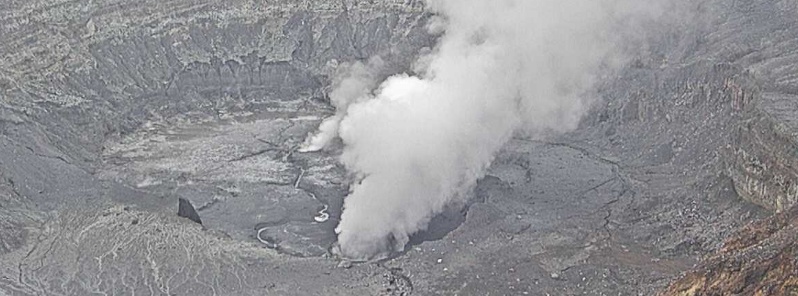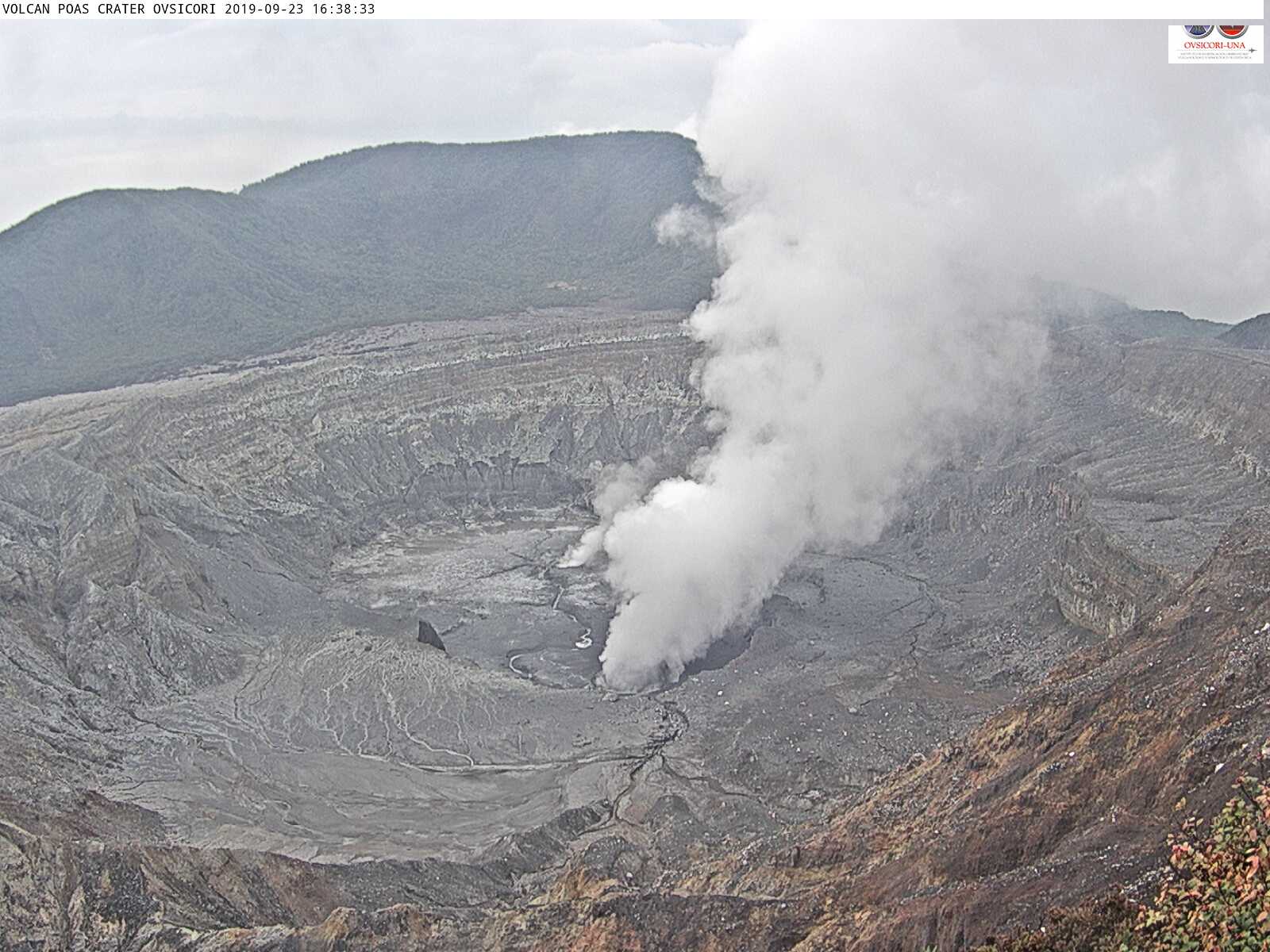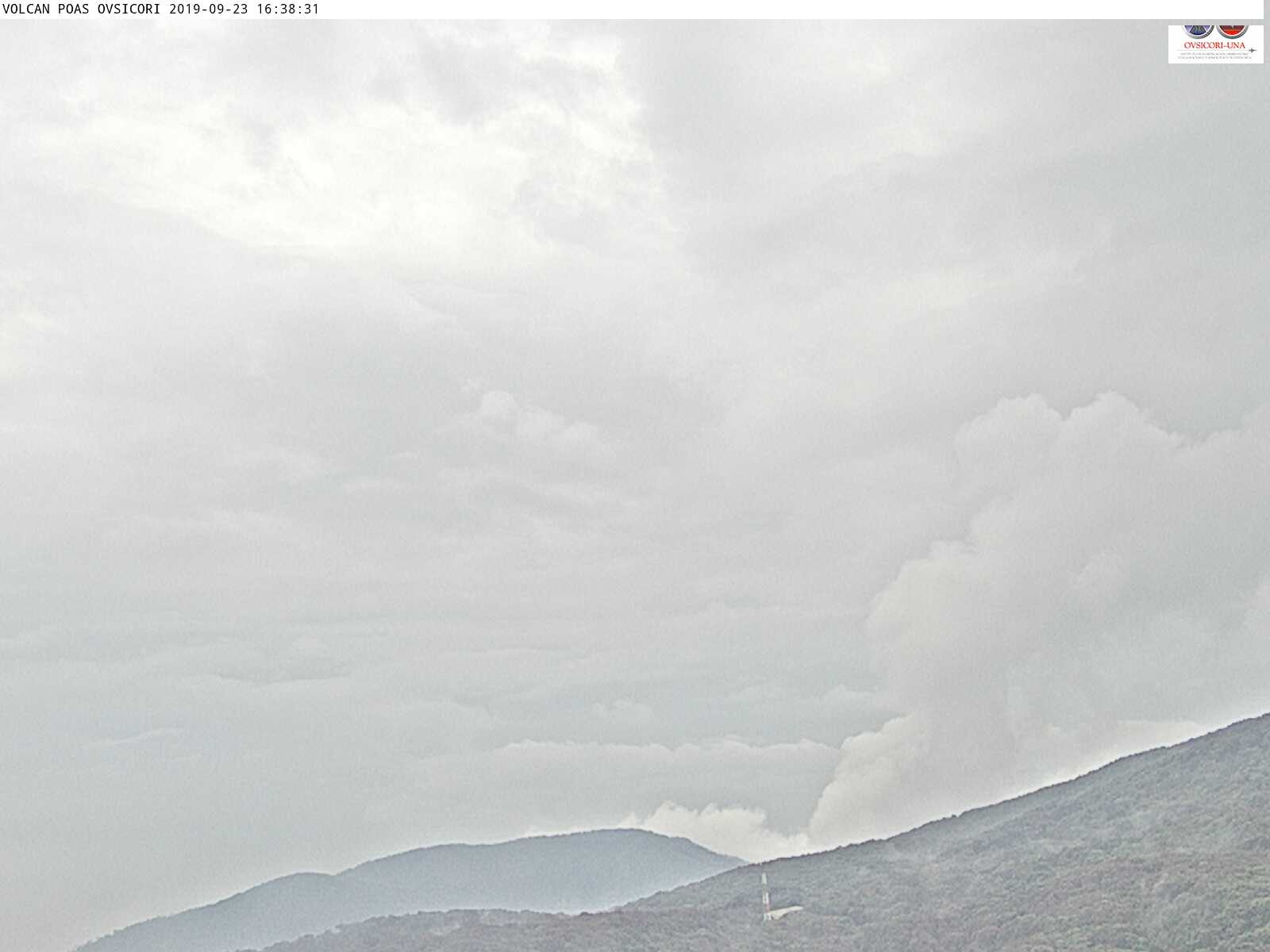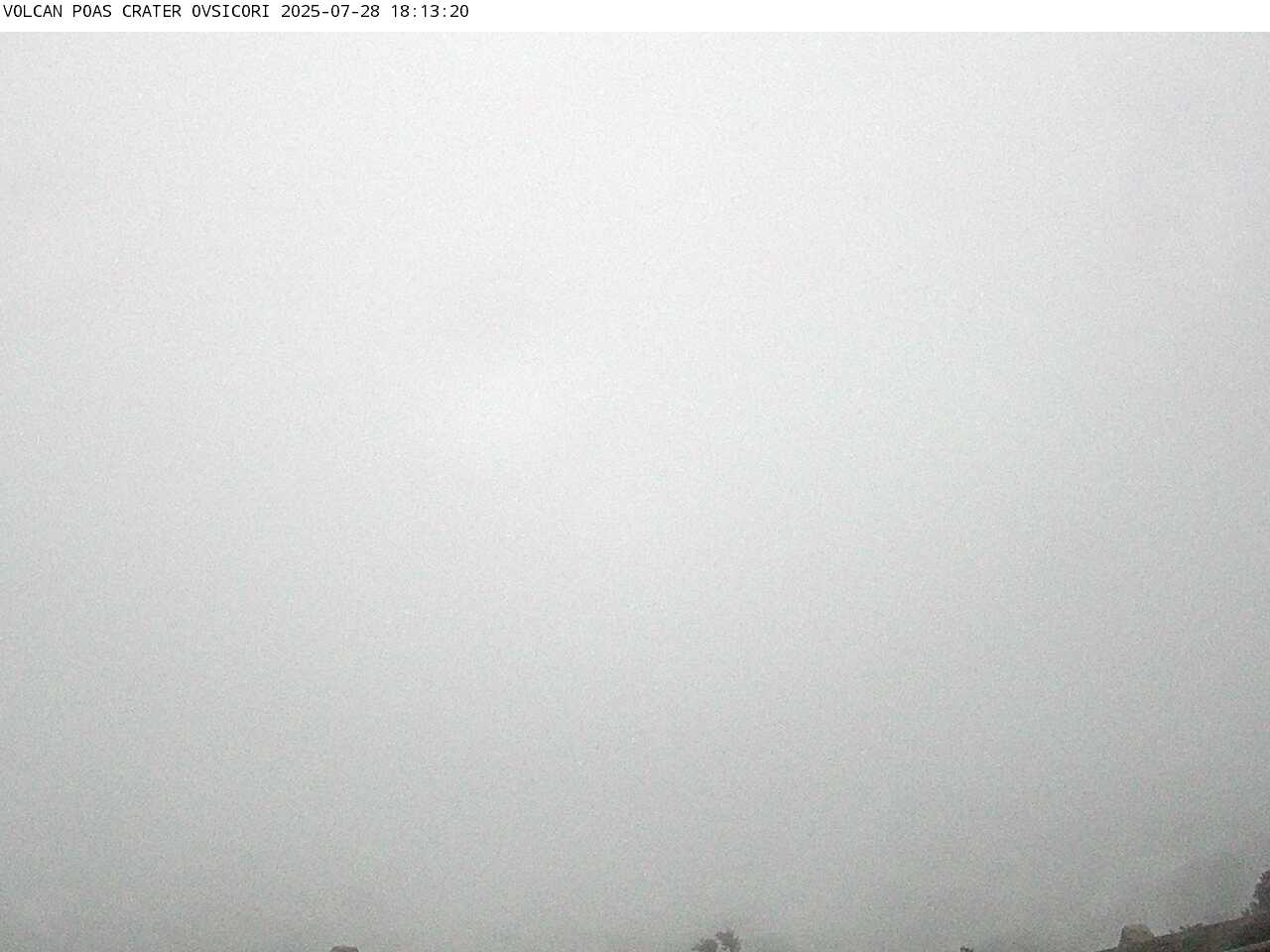Hydrothermal eruption at Poas volcano, Costa Rica

A hydrothermal eruption, lasting 25 minutes, started at Costa Rica's Poas volcano early September 23, 2019 (UTC).
According to the Volcanological and Seismological Observatory of Costa Rica (OVSICORI), the eruption started at 20:59 local time on September 22 (02:59 UTC, September 23).
The explosion produced a column of steam rising up to 2 000 m (6 500 feet) above the crater. This is 4 700 m (15 500 feet) above sea level.
Initial reports from OVSICORI stated that ash falls were not detected.
Poas Volcano National Park is closed while authorities conduct close monitoring.



Poas volcano webcam. Image is refreshed every 60 seconds. Credit: OVSICORI-UNA
#VolcánPoás 23/09/2019 16:40
En vivo de https://t.co/lBAdmFIxvH
Bot Telegram: https://t.co/Vhbf3xGG1C
Bot Instagram: https://t.co/sjwwQCrCQY pic.twitter.com/HOHKdniesM— Volcán Poás (@ElVolcanPoas) September 23, 2019
ERUPCIÓN VOLCÁN POÁS https://t.co/01WCrV8pmy pic.twitter.com/dlzPTkT8pS
— Movisis.org Internacional (@MOVISISEC) September 24, 2019
A notable eruption started at Costa Rica's Poas volcano on February 11, 2019, with persistent low-level ash emission and crater incandescence. The eruptive column reached 200 m (650 feet) above the crater or 2 908 m (9 540 feet) above sea level. The eruption continued into February 12, forcing authorities to close Poas Volcano National Park.
OVSICORI advised people with respiratory issues to take special precautions, including staying indoors or wearing masks if going outside.
This was the first strong activity at the volcano since 2017.
Geologic summary
The broad, well-vegetated edifice of Poás, one of the most active volcanoes of Costa Rica, contains three craters along a N-S line. The frequently visited multi-hued summit crater lakes of the basaltic-to-dacitic volcano, which is one of Costa Rica's most prominent natural landmarks, are easily accessible by vehicle from the nearby capital city of San José.
A N-S-trending fissure cutting the 2 708-m-high (8 884 feet) complex stratovolcano extends to the lower northern flank, where it has produced the Congo stratovolcano and several lake-filled maars.
The southernmost of the two summit crater lakes, Botos, is cold and clear and last erupted about 7 500 years ago. The more prominent geothermally heated northern lake, Laguna Caliente, is one of the world's most acidic natural lakes, with a pH of near zero. It has been the site of frequent phreatic and phreatomagmatic eruptions since the first historical eruption was reported in 1828. Eruptions often include geyser-like ejections of crater-lake water. (GVP)
Featured image credit: OVSICORI-UNA

Commenting rules and guidelines
We value the thoughts and opinions of our readers and welcome healthy discussions on our website. In order to maintain a respectful and positive community, we ask that all commenters follow these rules.